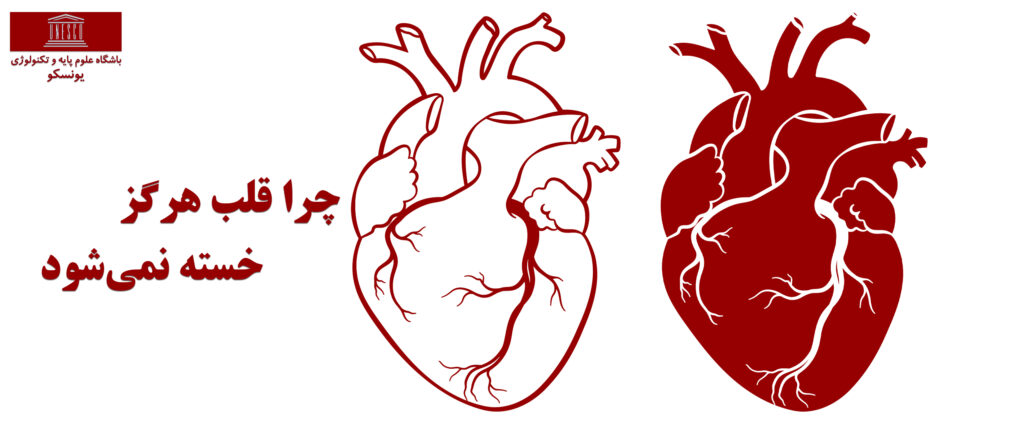Have you ever been so exhausted after a strenuous workout that you just lay on the floor, unable to move your muscles? We all know the experience; our muscles get tired, sore, and sore from overexertion. But at the same time, our hearts beat nonstop, showing no signs of fatigue. This begs the question: Why does the heart never get tired? Does this vital organ really work nonstop? And if so, how?
Muscles in the Body: Understanding the Three Main Types
To better understand the exceptional function of the heart, we must first become familiar with the types of muscles in the body. In general, there are three types of muscles in the human body:
1. Skeletal Muscles
These types of muscles are attached to bones and ligaments and are responsible for voluntary body movements. Whenever you walk, run, lift something, or even smile, you are using skeletal muscles. These muscles make up about 30 to 40 percent of the human body mass and are mostly involved in physical activity and exercise.
2. Smooth Muscles
Smooth muscles are found in hollow organs of the body, such as the intestines, blood vessels, bladder, and urinary tract. These muscles are involuntary, meaning they contract and expand without our awareness or control, and they play a vital role in the functioning of internal organs.
3. Cardiac Muscles
These muscles are found only in the heart and have a very specific structure. The muscle tissue of the heart is called the myocardium. The myocardium combines the characteristics of skeletal and smooth muscles, but has unique abilities and properties that distinguish it from other types of muscles.
Why do skeletal muscles fatigue?
When skeletal muscles engage in intense physical activity, they require a large source of energy. If this energy is not available in sufficient quantities, the muscles are unable to continue the activity and a feeling of fatigue, pain, and soreness occurs. Factors contributing to muscle fatigue include:
- Reduced glycogen (sugar) stores
- Lack of oxygen
- Lactic acid accumulation
- Impaired electrolyte regulation
During intense and prolonged activity, muscle cells are no longer able to provide ATP (the cellular energy unit), and as a result, the muscle stops moving.
Why doesn’t the heart muscle get tired?
Even though the heart works non-stop throughout a person’s life, it doesn’t get tired. But what is the reason for this phenomenon? Several key factors are involved:
1. Rich oxygen supply
The heart has an extensive network of blood vessels (coronary arteries) that deliver oxygen-rich blood to the myocardium. Even during intense physical activity, the blood supply to the heart continues to be effective. This feature helps the heart to always have enough oxygen to produce energy.
2. High percentage of mitochondria in heart cells
Mitochondria are the parts of the cell that produce energy. In heart muscle cells, mitochondria make up about 35% of the cell volume; in skeletal muscle, this number is only about 8.3%. This means that the heart produces energy much more efficiently than other muscles.
3. Automatic electrical system
The heart has an internal pacemaker system that causes it to contract regularly by sending electrical impulses. This system includes the sinoatrial node (SA Node), the atrioventricular node (AV Node), and the electrical conduction pathways. This system operates automatically and without the need for instructions from the brain.
4. Ability to adapt and recover quickly
If a part of the pacemaker cells is damaged, another group of cells quickly takes their place. This unique feature helps the heart to continue beating without stopping.
How does the heart adapt to different conditions?
Not only does the heart not tire, but it has an amazing ability to adapt to the changing needs of the body.
Increased heart rate during exercise
During physical activity, the body needs more oxygen and nutrients. In response to this need, the heart rate increases and more blood is transported to the muscles. This process is controlled by hormones such as adrenaline and noradrenaline.
Increases heart size and strength
Regular exercise increases the size and strength of the heart, a phenomenon called “physiological hypertrophy.” In this case, the heart can pump more blood with each beat, increasing its efficiency.
Long-term structural adaptation
In response to long-term demands, the heart changes its structure and becomes more efficient by increasing the number of mitochondria and improving blood vessels.
Is the heart invincible?
Although the heart is very resilient, it is by no means invincible. An unhealthy lifestyle can weaken its function over time. Factors that threaten heart health include:
- Unhealthy diet (fat, high salt, high sugar)
- Inactivity
- Smoking
- Chronic stress
- High blood pressure and high cholesterol
- Obesity and overweight
Although the heart has a great ability to cope with stress, if it is not properly cared for, the risk of heart disease increases.
How to take care of your heart?
Heart health is one of the most key factors for a long and high-quality life. Heart care strategies include the following:
1. Healthy diet
- Using fruits, vegetables, whole grains, and healthy fats
- Avoiding processed foods and fast foods
- Limiting salt and sugar intake
2. Regular exercise
Regular physical activity, such as brisk walking, cycling, or swimming, helps strengthen the heart and reduces the risk of heart disease.
3. Stress Management
Exercises such as meditation, yoga, deep breathing, and adequate sleep help reduce stress and control blood pressure.
4. Weight and Blood Pressure Control
Maintaining a healthy weight and controlling blood pressure prevent damage to the heart vessels.
5. Quitting Smoking and Alcohol
Smoking and alcoholic beverages are major causes of heart disease and should be completely avoided.
Conclusion: The Heart, the Eternal Guardian of Life
The heart is a unique muscle that beats and pumps blood tirelessly throughout our lives. Its high ability to produce energy, receive oxygen, and regulate its function means that, unlike other muscles, it does not need to rest. But this fact does not mean that it does not need care. No matter how strong the heart is, it is vulnerable to an unhealthy lifestyle.
By choosing a healthy lifestyle, eating right, exercising, getting enough sleep, and managing stress, we can keep this loyal guardian of life in top condition for years to come.


